Discover the optimal charging voltages for lithium batteries: Bulk/absorb = 14.2V–14.6V, Float = 13.6V or lower. Avoid equalization (or set it to 14.4V if necessary) and temperature compensation. Absorption time: about 20 minutes per battery. Ensure safe and efficient charging to master battery care and optimize performance.

Why is understanding optimal charging voltage important?
Understanding the optimal charging voltage for lithium batteries is crucial for their performance and longevity. This guide emphasizes the impact of charging voltage on capacity, cycle life, and overall battery health.
- Efficient Charging: Knowing the optimal charging voltage prevents undercharging or overcharging, ensuring efficient charging. Undercharging reduces capacity, while overcharging can lead to safety hazards like overheating or explosions.
- Battery Types and Differences: Different lithium batteries have distinct optimal charging voltages. For instance, LiFePO4 batteries require specific voltage ranges for efficient charging. Recognizing these differences ensures the use of the correct charger and charging profile.
- Maximizing Cycle Life: Maintaining an appropriate charging voltage, as per manufacturer recommendations, maximizes a battery’s cycle life. Consistent and proper charging voltage helps prevent capacity reduction over time, ensuring prolonged battery lifespan.
Understanding optimal charging voltage is essential for safe and efficient lithium battery usage, preventing detrimental effects and promoting longevity. Follow manufacturer guidelines for an optimized experience with your specific battery type.
Different types of lithium batteries
Different types of lithium batteries have distinct charging voltage requirements, crucial for optimizing the charging process and extending battery life. Understanding these differences is essential for safe and efficient operation.
- LiFePO4 Batteries: Lithium Iron Phosphate (LiFePO4) batteries, with a nominal voltage of 3.2 volts per cell, require a specific charging profile for optimal performance. Known for their long cycle life and safety features, they demand precise charging parameters.
- LiPo Batteries: Lithium Polymer (LiPo) batteries, with a nominal voltage of 3.7 volts per cell, offer higher energy density. Ideal for applications requiring lightweight design, LiPo batteries need accurate charging parameters to prevent overcharging or undercharging.
- LiCoO2 Batteries and Others: Lithium Cobalt Oxide (LiCoO2) batteries, common in consumer electronics, have a nominal voltage of 3.6 volts per cell. Other types like Lithium Manganese Oxide (LiMn2O4), Lithium Nickel Cobalt Aluminum Oxide (NCA), and Lithium Nickel Manganese Cobalt Oxide (NMC) each have unique characteristics and specific charging voltage requirements.
Understanding the distinctions between lithium battery types enables informed choices regarding chargers and charging parameters, ensuring safe and efficient operation while maximizing battery lifespan.
The Basics of Lithium Battery Charging
Charging lithium batteries requires a nuanced understanding to ensure optimal performance and longevity. Let’s explore the basics, from avoiding lead acid chargers to understanding charging profiles and factors affecting optimal charging voltage.
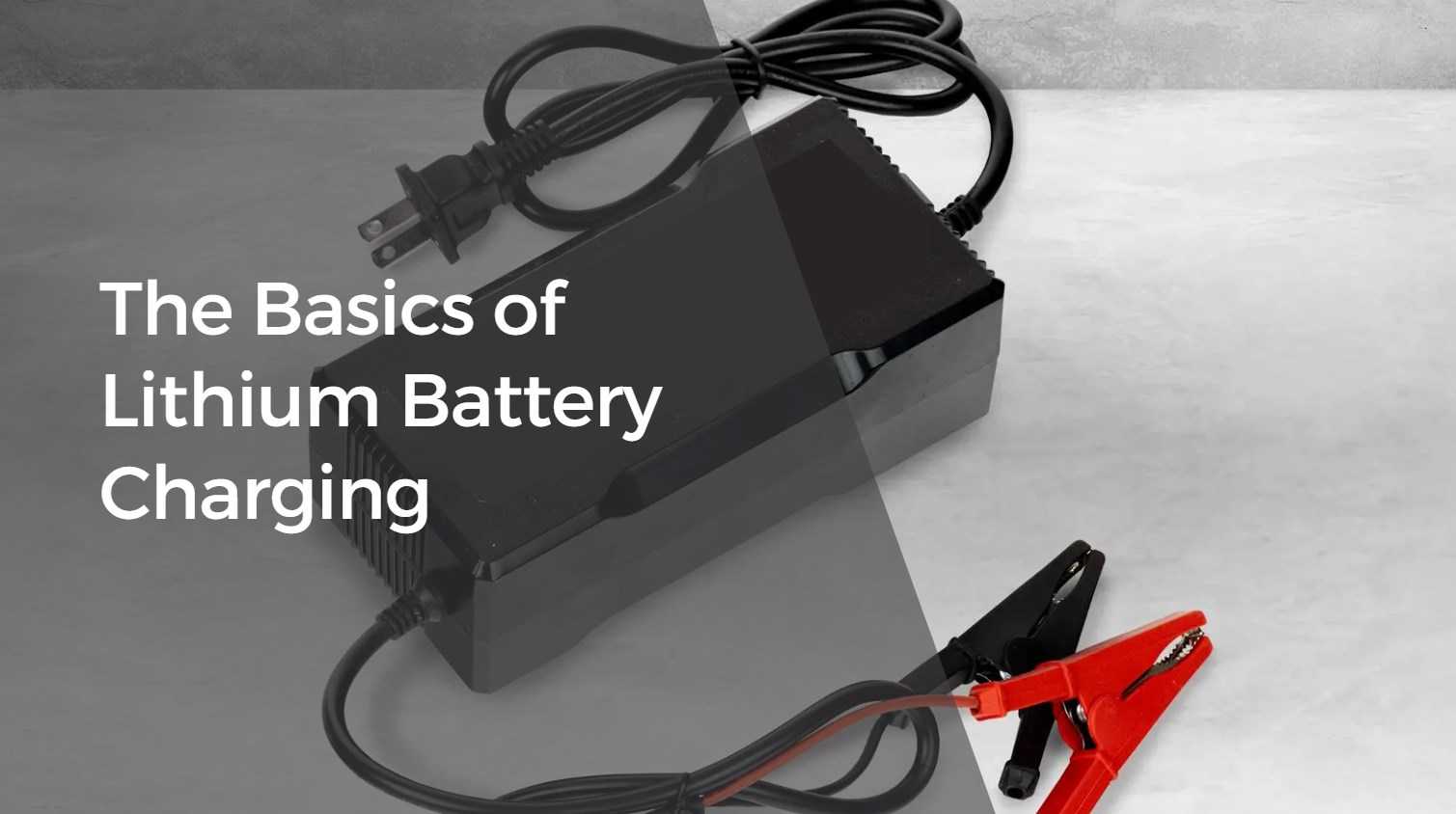
- Lead Acid Charger Compatibility: Using a lead acid charger for lithium batteries is a big no. Their differing charging profiles can lead to overcharging, risking damage or even fire hazards. It’s crucial to use chargers specifically designed for lithium batteries.
- Charging Profiles for Different Lithium Batteries: Various lithium batteries, such as sealed lead acid (SLA) and LiFePO4, have distinct charging requirements. SLA batteries typically need constant voltage charging, while LiFePO4 batteries have specific voltage ranges for optimal charging. Understanding these profiles is key.
- Factors Affecting Optimal Charging Voltage: Factors like capacity correlation and cycle life dependency on charge voltage play vital roles. Balancing charge voltage is essential to maximize battery lifespan and overall performance.
- Recommended Charging Voltages for Different Lithium Batteries: Knowing the recommended charging voltages is crucial. A 12V lithium battery typically requires 13-14 volts, a 24V battery needs around 27-28 volts, and larger 48V systems may require 54-56 volts during charging. Finding the right balance is essential for efficient charging.
Understanding these basics ensures safe and effective lithium battery charging, preventing potential damage and optimizing their overall performance.
Can a lead acid charger charge a lithium battery?
The compatibility of lead acid chargers with lithium batteries is a common concern. In a nutshell, a lead acid charger is not suitable for lithium batteries due to distinct voltage requirements, posing risks to performance and longevity.
- Lead Acid Charger Limitation: Lead acid chargers, tailored for lead acid batteries, lack compatibility with lithium batteries. Their differing voltage requirements can lead to improper charging, risking safety hazards and compromising the lithium battery’s functionality.
- Specific Charging Profile for Lithium Batteries: Lithium batteries demand a specific charging profile for optimal performance and longevity. Utilizing a lead acid charger may result in overcharging, leading to safety hazards, or undercharging, reducing the battery’s capacity and cycle life.
- Importance of Using the Right Charger: To ensure safe and efficient charging while maximizing a lithium battery’s lifespan, it’s crucial to use the correct charger designed explicitly for lithium batteries. Choosing the right charger aligns with the battery’s unique requirements, preventing potential risks associated with incompatible charging methods.
Understanding these considerations emphasizes the importance of using the appropriate charger, avoiding potential risks and ensuring the optimal functionality and longevity of lithium batteries.
Sealed lead acid (SLA) battery charging profile
Sealed lead acid (SLA) batteries find widespread use in applications like backup power systems and electric vehicles. It’s crucial to understand their charging profile for proper and efficient operation.
- Bulk Charge Stage:
- In the bulk charge stage, a constant current is applied to rapidly recharge the SLA battery, swiftly reaching 70-80% of its capacity.
- This initial stage ensures a quick replenishment of energy, allowing for a fast turnaround in restoring the battery’s charge.
- Absorption Charge Stage:
- Upon reaching the threshold, the absorption charge stage begins.
- Here, a constant voltage is maintained while gradually reducing the charging current, fully restoring the battery’s capacity without risking overcharging.
- Float Charge Stage:
- The fully charged battery enters the float charge stage.
- A lower voltage is applied to maintain its full capacity, preventing overcharging and extending the overall lifespan of SLA batteries.
Understanding and adhering to this charging profile is essential for ensuring the longevity and optimal performance of sealed lead acid batteries across various applications.
LiFePO4 battery charging profile
LiFePO4 batteries, known for their high energy density, require a specific charging profile to optimize performance and lifespan. Let’s explore the key aspects of charging these lithium iron phosphate batteries.
- Charging Profile Overview:
- LiFePO4 batteries demand a constant voltage charge followed by a tapering current until reaching full capacity.
- During the initial stage, voltage remains constant while the charging current gradually decreases.
- Recommended Charging Voltage:
- LiFePO4 batteries can be charged at higher voltages compared to other lithium chemistries.
- The recommended charging voltage typically falls within the range of 3.6-3.8 volts per cell or 14-15 volts for a 12V battery pack.
- Cautionary Considerations:
- Exceeding the recommended voltage may lead to overcharging and potential battery damage.
- Undercharging can result in reduced capacity and a shortened cycle life, emphasizing the importance of precise charging.
- Optimal Charging Practices:
- To ensure proper charging, use a charger designed for LiFePO4 chemistry or one with adjustable settings.
- Monitoring temperature during charging is crucial to prevent excessive heat, which can be harmful to LiFePO4 batteries.
By adhering to the correct charging profile and utilizing suitable chargers, users can maximize the benefits of LiFePO4 batteries, ensuring both optimal performance and an extended lifespan.
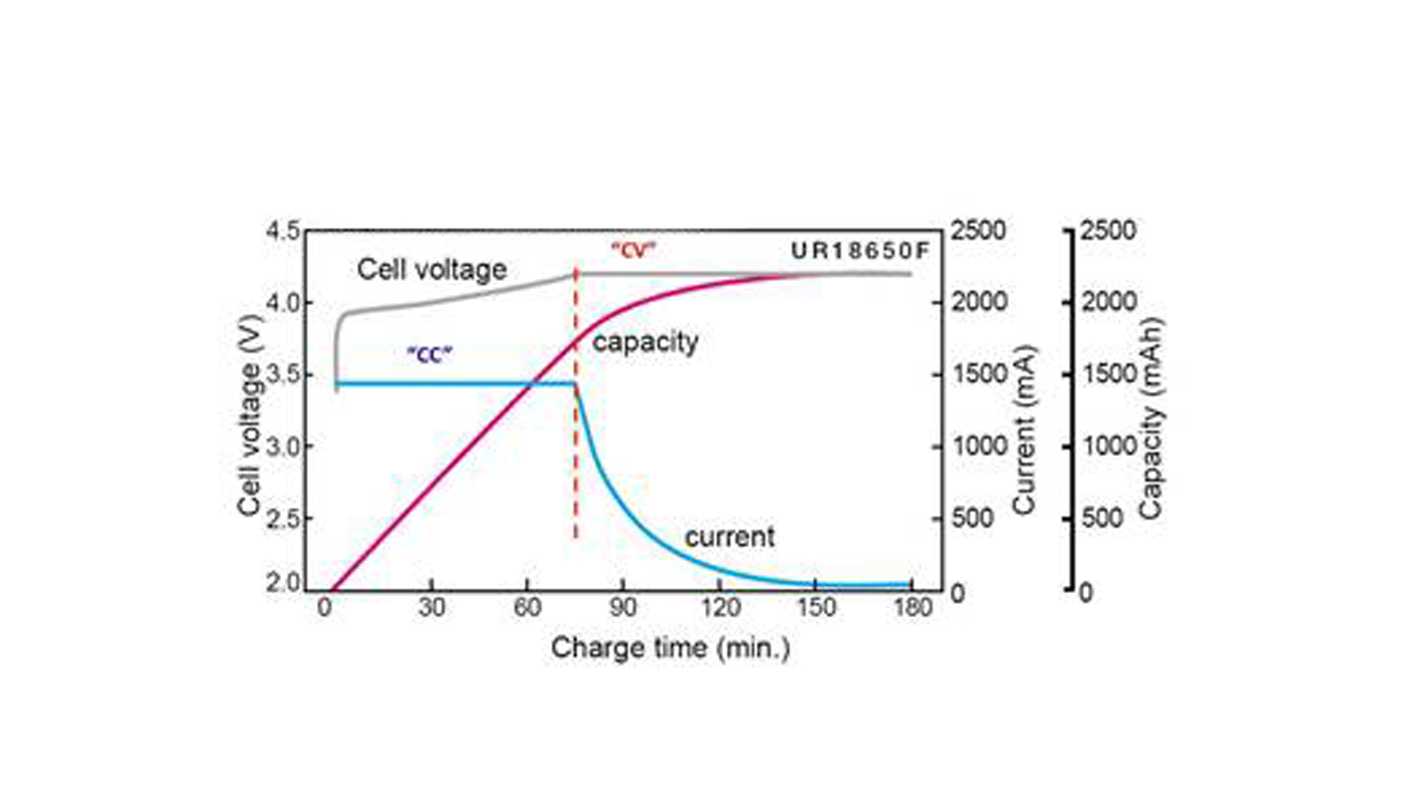
Lithium battery charging characteristics
Understanding lithium battery charging characteristics is crucial for optimal performance and durability. Unlike lead-acid batteries, lithium batteries have specific requirements that must be met to avoid damage or reduced lifespan.
- Sensitivity to Overcharging:
- Lithium batteries are sensitive to overcharging, leading to excessive heat and potential safety hazards.
- To prevent this, use chargers designed for lithium batteries with monitoring and control capabilities.
- Constant Voltage Requirement:
- During the bulk charging phase, lithium batteries need a controlled charge at a specific voltage level.
- This ensures equal charging across cells, preventing imbalance issues within the battery pack.
- Minimal Self-Discharge Rates:
- Lithium batteries exhibit minimal self-discharge rates compared to other chemistries, retaining energy for longer periods.
- Avoid leaving them unattended while plugged in, as continuous trickle charging can impact overall lifespan.
Understanding these lithium battery characteristics empowers users to choose appropriate chargers and design effective charging systems. By following proper protocols and using compatible equipment, efficiency and lifespan of lithium battery-powered devices can be maximized.
Factors Affecting Charging Voltage
Charging lithium batteries involves careful consideration of voltage to ensure top-notch performance and durability. Various factors impact the charging voltage of these batteries, influencing their overall effectiveness.
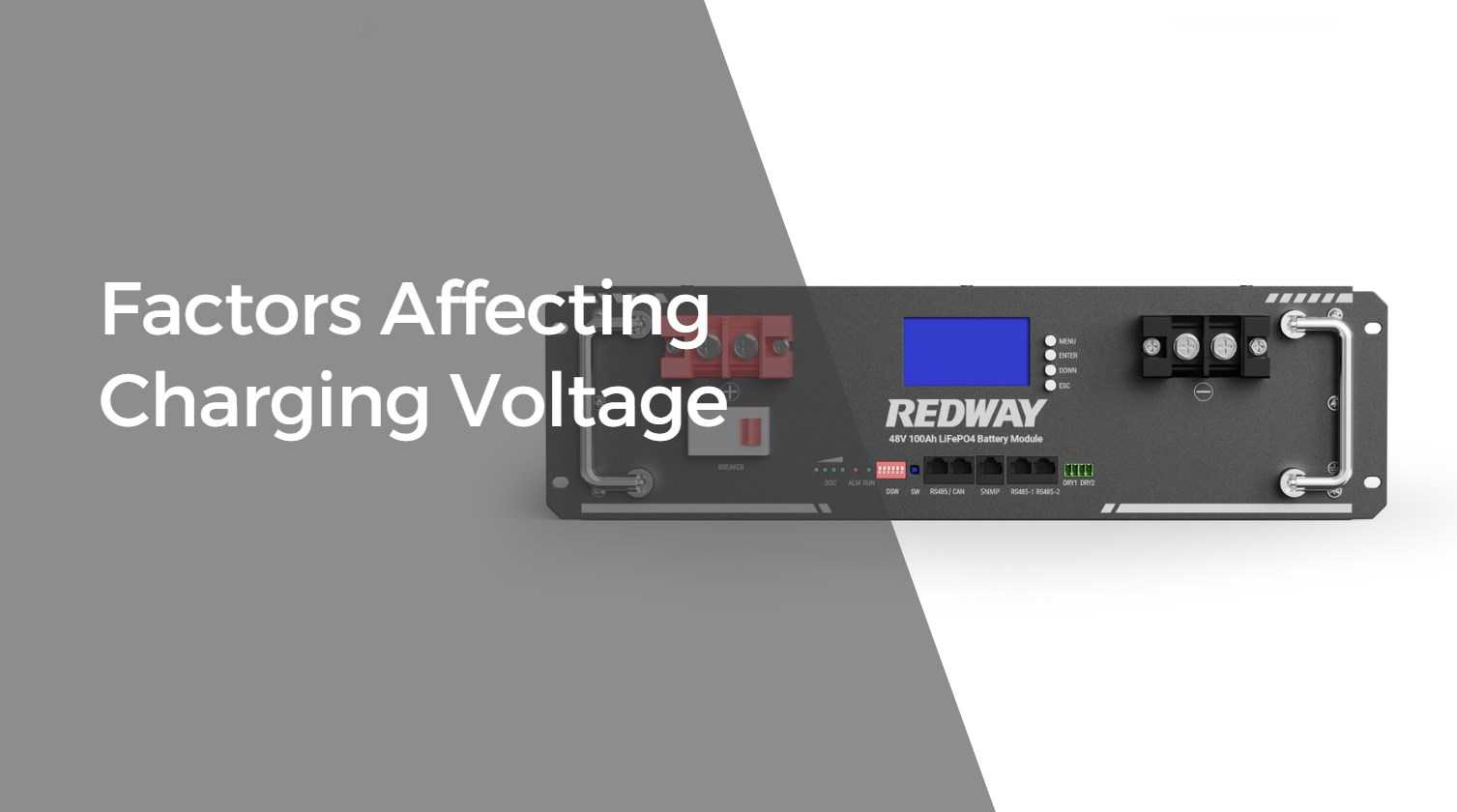
- Battery Capacity:
- Different lithium batteries exhibit varying charge voltages based on their capacity.
- Higher-capacity batteries typically require elevated charging voltages to achieve full capacity.
- Cycle Life:
- The cycle life, indicating the number of charge-discharge cycles a battery can endure, is affected by charging voltages.
- Lower charging voltages have been linked to extended cycle life, while higher voltages may accelerate degradation.
- Temperature Influence:
- Temperature plays a role in charging voltage requirements for lithium batteries.
- Rising temperatures elevate charging voltages, while colder conditions may necessitate lower voltages.
Understanding these factors, specific to each lithium battery type, is crucial for optimizing charging voltage and, consequently, maximizing both performance and lifespan.
Capacity correlation with charge voltage
The capacity of a lithium battery, determining its energy storage capability, is directly influenced by the charging voltage. Understanding this correlation is vital for optimizing performance and longevity.
- Capacity Increase with Voltage:
- Elevating the charging voltage effectively boosts the capacity of a lithium battery.
- Within specified limits, adjusting the charge voltage can enhance the energy storage capabilities.
- Limitations and Risks:
- Exceeding recommended charge voltages poses risks of overcharging, overheating, and potential damage.
- Caution is crucial to avoid negative impacts on both short-term performance and long-term durability.
- Manufacturer Recommendations:
- Adherence to manufacturer recommendations for charging voltages is paramount.
- These guidelines consider cell chemistry, design specifications, and safety, ensuring optimal capacity without compromising the battery’s health.
Understanding the impact of charge voltage on capacity and following proper guidelines is key to maximizing the performance and lifespan of lithium batteries. Always consult manufacturer documentation or seek professional advice before making adjustments.
Cycle life dependency on charge voltage
Cycle life, representing a lithium battery’s charge-discharge cycles before capacity degradation, is crucial for optimizing charging voltage. The relationship between charge voltage and cycle life significantly impacts the long-term performance of lithium batteries.
- Effect of Charge Voltage on Cycle Life:
- Higher charge voltages accelerate degradation and shorten the cycle life of lithium batteries.
- Elevated stress from high charge voltages leads to faster aging and capacity loss over time.
- Benefits of Lower Charge Voltages:
- Lower charge voltages help minimize stress on internal components, extending the overall lifespan of the battery.
- Reduced degradation results in prolonged cycle life, ensuring sustained performance over multiple charge-discharge cycles.
- Guidelines and Recommendations:
- Manufacturers provide recommended charging voltage ranges based on battery chemistry, temperature, and ideal usage conditions.
- Adhering to these guidelines is crucial to balance energy storage capacity and cycle life, ensuring the long-term reliability of lithium batteries.
Understanding the impact of charge voltage on cycle life is essential for maintaining optimal performance and longevity. Following manufacturer recommendations for charging voltage enables effective balancing between energy storage capacity and overall lifespan. Consider these factors when establishing your charging system.
Charging Voltage for Different Lithium Battery Voltages
Charging voltages for lithium batteries vary based on their voltages, and it’s crucial to understand the specific requirements for optimal performance. Here’s a breakdown for 12V, 24V, and 48V lithium batteries:
- 12V Lithium Battery Charging Voltage:
- For a 12V LiFePO4 battery, the recommended charging voltage is generally around 14.6 volts.
- Consulting the manufacturer’s specifications is essential to determine the precise charging voltage required for your specific 12V battery model.
- 24V Lithium Battery Charging Voltage:
- A 24V lithium-ion or LiFePO4 battery pack typically requires a charging voltage within the range of about 29-30 volts.
- Specialized chargers designed for multi-cell configurations should be considered, and adherence to manufacturer guidelines is crucial for safe and efficient charging.
- 48V Lithium Battery Charging Voltage:
- Larger-scale energy storage systems, like those in electric vehicles or renewable energy installations, often use 48V systems.
- The ideal charging voltage for 48V packs falls between approximately 58-60 volts, ensuring proper power delivery, longevity, and overall battery health. Always follow manufacturer-specified charge voltages for accuracy.
Remember, these are general guidelines, and specific lithium battery chemistry may influence the exact charging requirements. Always refer to your battery’s manufacturer recommendations for precise information.

12V lithium battery charging voltage
Optimal charging voltage is critical for the performance and lifespan of a 12V lithium battery. Unlike lead acid batteries, lithium batteries require specific charging profiles for safe and efficient operation. Here’s a concise guide:
- Recommended Charging Voltage:
- For a 12V lithium battery, the recommended charging voltage typically ranges from 14.2V to 14.6V.
- This range ensures reaching full capacity without the risks of overcharging or undercharging. Always refer to your battery’s manufacturer guidelines for precise recommendations.
- Monitoring State of Charge:
- Use a multimeter to measure the voltage across the terminals for estimating the current state of charge in your 12V lithium battery.
- Tools for Charging Management:
- Employ a battery monitor for real-time data on voltage levels, current flow, and remaining capacity. This helps adjust your charging strategy based on accurate information.
- Solar Charging Considerations:
- If using solar power, a solar charge controller is essential. It regulates incoming solar energy, maintains optimal charging voltage, and protects against overcharging and over-discharging.
By adhering to the correct charging voltage and utilizing monitoring tools, you ensure long-lasting performance, maximizing the overall lifespan of your 12V lithium battery for reliable power needs.
24V lithium battery charging voltage
Optimal charging voltage is crucial for the performance and lifespan of a 24V lithium battery. Careful consideration is needed to prevent overcharging or undercharging, which can impact capacity and longevity. Here’s a concise guide:
- Consult Manufacturer’s Guidelines:
- Determine the correct charging voltage for your 24V lithium battery by consulting the manufacturer’s specifications.
- Different lithium batteries may have slightly different voltage requirements, so ensure you use the appropriate charging profile.
- Charging Voltage Range:
- Typically, a 24V lithium battery requires a charging voltage range between 25.2V and 29.4V.
- This range allows for efficient and safe charging without risking potential damage to the battery cells.
- Use Lithium Battery Chargers:
- Use chargers specifically designed for lithium batteries to ensure safe charging.
- These chargers often come with built-in safety features like temperature monitoring and automatic shut-off upon reaching full charge.
- Monitor State of Charge:
- Regularly monitor your battery’s state of charge during charging using equipment like battery monitors or solar charge controllers.
- These tools provide real-time information about voltage levels, helping you maintain optimal charging conditions.
By adhering to these guidelines and understanding the optimal charging voltage, you can ensure the longevity, reliability, and overall performance of your 24V lithium battery across various applications.
48V lithium battery charging voltage
Optimal charging voltage is crucial for the performance and lifespan of a 48V lithium battery. Unlike other lithium batteries, specific charging parameters are essential to prevent issues. Here’s a concise guide:
- Consult Manufacturer’s Specifications:
- Determine the appropriate charging voltage for your 48V lithium battery by consulting the manufacturer’s specifications or user manual.
- Detailed information on the recommended charging voltage range for your specific battery model will be provided in these documents.
- Use Dedicated 48V Lithium Battery Chargers:
- Utilize chargers specifically designed for 48V lithium batteries.
- These chargers feature advanced charging algorithms to deliver precise voltage levels, preventing potential damage from incorrect charging.
- Regular Monitoring of State of Charge:
- Regularly monitor your battery’s state of charge to maintain its health and optimize performance.
- Dedicated battery monitors or data provided by solar charge controllers (if applicable) can help in this regard.
- Adherence to Manufacturer Guidelines:
- Always use a compatible charger and adhere to the recommended charging voltage range provided by the manufacturer.
- Incorrect charging methods, including the use of incompatible chargers or applying incorrect voltages, can significantly impact the battery’s lifespan and capacity.
Understanding and following the optimal charging voltage guidelines for a 48V lithium battery is vital for maximizing its lifespan and efficiency. By consulting manufacturer guidelines, using compatible chargers, and monitoring the state of charge regularly, you can ensure long-lasting performance without compromising safety or reliability.
Methods for Determining Battery Voltage
Accurately determining the voltage of lithium batteries is crucial for ensuring optimal charging. Here are effective methods for measuring battery voltage:
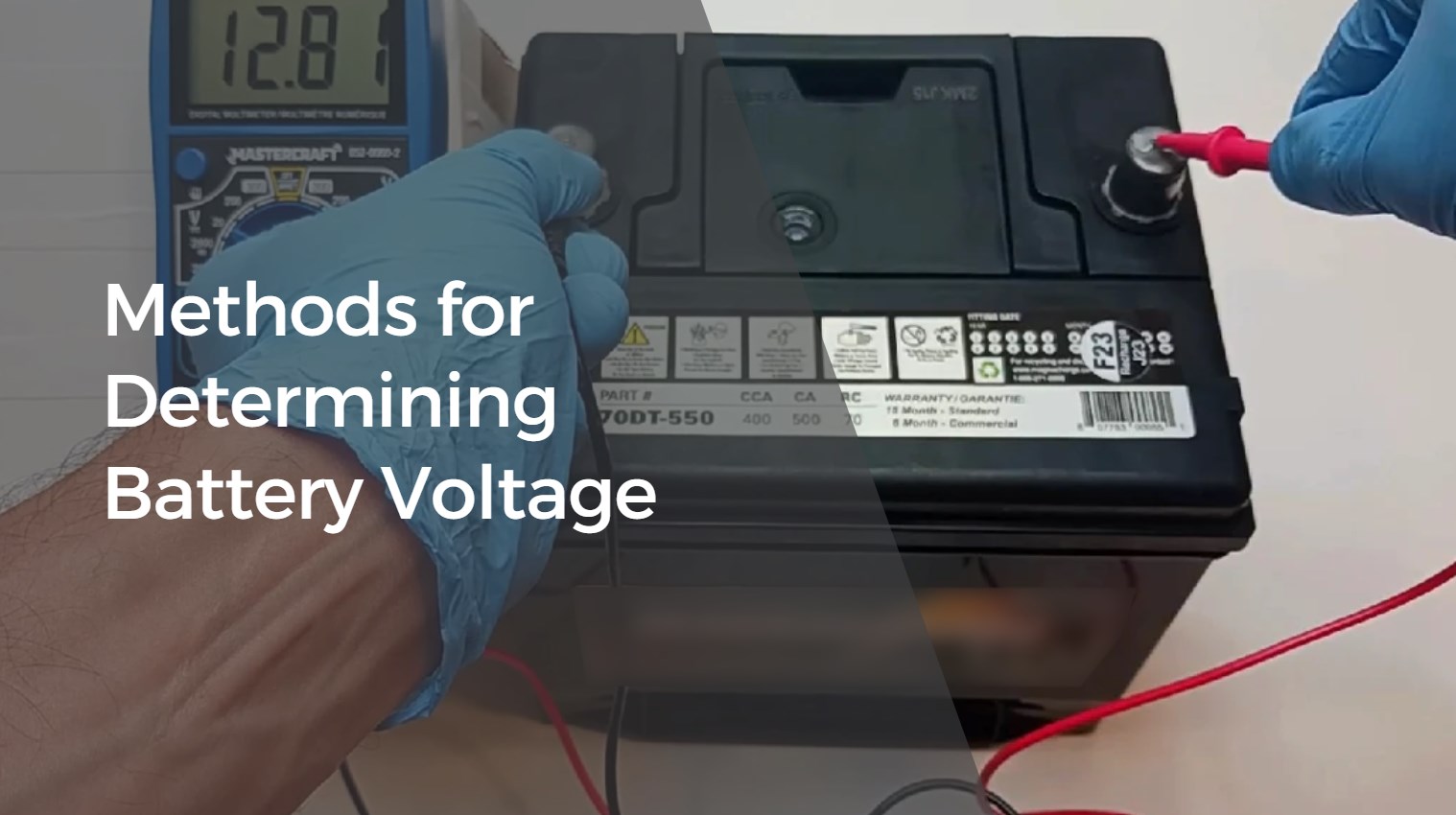
- Multimeter Measurement:
- Use a multimeter to directly measure the battery’s voltage.
- Connect the multimeter’s positive and negative terminals to the corresponding battery terminals for a quick and accurate reading.
- Battery Monitor Usage:
- Employ a battery monitor designed to provide real-time information on the battery’s state of charge, including its voltage level.
- Battery monitors come with easy-to-read displays and are suitable for various applications.
- Solar Charge Controller Display:
- If you have a solar power system with a solar charge controller, utilize its built-in digital display.
- Solar charge controllers show crucial information, including battery voltage, helping you monitor and maintain optimal charging levels.
By utilizing these methods to determine battery voltage accurately, you can better control and ensure the optimal charging voltage for your lithium batteries. This knowledge contributes to prolonging their lifespan and enhancing performance across various applications.
Multimeter measurement
Determining the voltage of a lithium battery is simplified with the popular method of using a multimeter. This efficient tool allows accurate measurement of direct current (DC) voltage, providing quick insights into your battery’s status.
- Setting Up the Multimeter:
- Set your multimeter to the DC voltage range matching your battery’s voltage.
- Ensure the battery is disconnected and attach the red probe to the positive terminal and the black probe to the negative terminal.
- Reading the Voltage:
- The digital display on the multimeter will show the actual voltage of your lithium battery.
- This straightforward process provides a clear indication of the battery’s charge level.
- Safety First:
- Prioritize safety when using a multimeter for lithium battery measurement.
- Adhere to proper safety precautions and wear appropriate protective gear throughout the process.
Using a multimeter proves to be an excellent method for monitoring and preserving the health of lithium batteries. Regular checks enable you to understand charge levels, facilitating efficient charging practices and extending the overall lifespan of your batteries. So, for accurate measurements of your lithium battery’s charge level, trust your reliable multimeter!
Battery monitor usage
Effectively managing lithium battery charging is simplified with the use of a battery monitor. This tool offers real-time insights into charge status, voltage, and current flow, empowering users to optimize their charging strategy.
- Simple Usage:
- Connect the battery monitor to your lithium battery’s terminals effortlessly.
- The display provides essential information such as voltage, current flow, remaining capacity, and estimated time until full charge or discharge.
- Accuracy and Ease:
- Obtain accurate readings without complex calculations or disconnecting wiring.
- Easily track energy usage and reserve levels, facilitating informed decisions in managing your lithium batteries.
- Optimized Charging:
- Adjust voltage based on precise measurements, preventing overcharging or undercharging.
- Enhance the lifespan and performance of lithium batteries by avoiding guesswork and relying on accurate data.
- Advanced Features:
- Some monitors offer additional features like historical data logging, low voltage alarms, abnormal behavior alerts, and integration with systems like solar charge controllers.
- Investment in Convenience:
- Investing in a quality battery monitor adds convenience and ensures optimal charging conditions for lithium batteries.
- Make informed decisions based on accurate data, elevating your charging strategy and ultimately maximizing the lifespan of your lithium batteries.
Solar charge controller utilization
Charging lithium batteries with solar power requires careful consideration, and the use of a solar charge controller is paramount. This controller serves as a crucial link between solar panels and batteries, regulating voltage and current to optimize charging.
- Overcharging Prevention:
- A solar charge controller actively monitors battery voltage, preventing overcharging by adjusting charging parameters.
- Maintains optimal charging voltage, safeguarding lithium batteries from potential damage and ensuring longevity.
- Reverse Current Protection:
- Protects batteries and the solar system by preventing reverse current flow during low or no sunlight periods.
- Mitigates the risk of damage by controlling the direction of current between the battery and solar panels.
- Temperature Compensation:
- Advanced solar charge controllers include temperature compensation features.
- Adjusts charging parameters based on temperature variations, optimizing charging efficiency and extending battery life.
- Enhanced Performance:
- The utilization of a reliable solar charge controller significantly enhances the performance and lifespan of lithium batteries.
- When charged with renewable energy sources like solar power, this combination ensures efficient and sustainable power utilization.
Best Practices for Charging Lithium Batteries
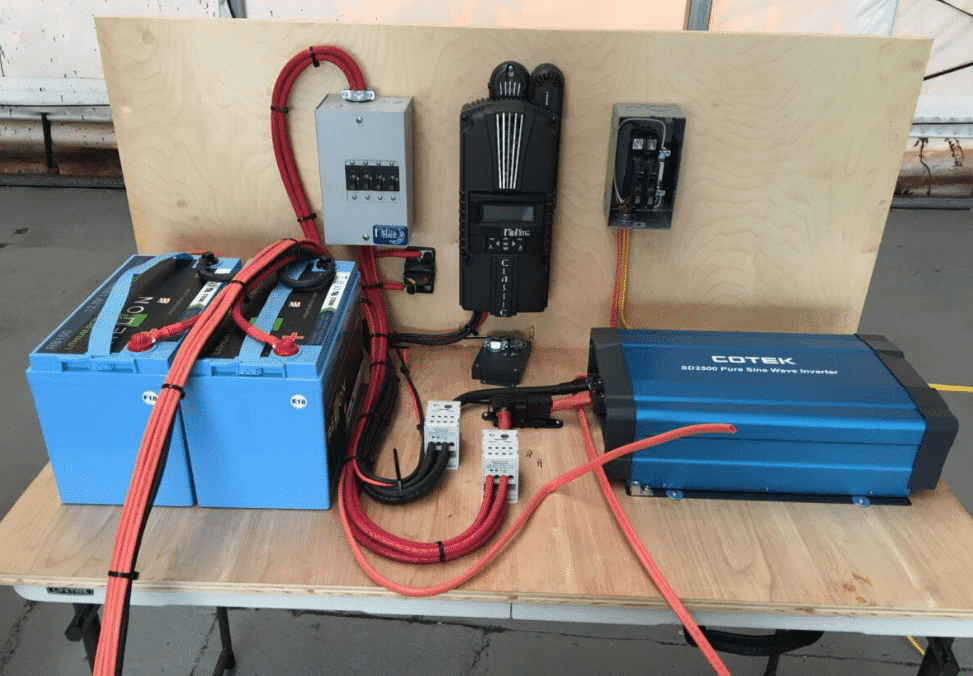
Charging lithium batteries demands adherence to best practices for optimal performance and durability. This involves considerations such as temperature compensation, calculating charging time, managing ripple voltage, and understanding Peukert’s Law.
- Temperature Compensation:
- Use a charger capable of adjusting charging voltage based on temperature changes.
- Protects lithium batteries from potential damage by accounting for variations in internal resistance during temperature fluctuations.
- Charging Time Calculation:
- Consider factors like capacity and charge rate to determine the appropriate charging time.
- Avoid rushing the process or overcharging to prevent reduced cycle life and potential harm to the battery.
- Ripple Voltage Management:
- Address variations in voltage during charging, known as ripple voltage.
- Opt for chargers with low ripple voltage output or incorporate a filter circuit to minimize fluctuations and reduce stress on lithium batteries.
- Monitoring System Utilization:
- Implement a reliable monitoring system tracking parameters like current flow and terminal voltage.
- Offers valuable insights into the state of charge, indicating when the battery nears full capacity or requires recharging.
- Peukert’s Law Application:
- Consider Peukert’s Law to understand how different discharge rates impact usable capacity and overall efficiency.
- Optimize usage and recharging patterns by factoring in Peukert’s exponent for enhanced lithium battery performance.
Temperature compensation for optimal protection
Temperature compensation is pivotal in the charging process of lithium batteries, safeguarding them from potential damage due to temperature variations. This sensitivity requires careful adjustments to charging voltage, considering both low and high temperature challenges.
- Low Temperature Charging:
- Charging lithium batteries in low temperatures increases internal resistance, making voltage delivery challenging.
- This condition can hinder the charging process, affecting battery life and overall performance.
- High Temperature Charging:
- High temperatures pose risks of overcharging and damaging battery cells during the charging process.
- Proper measures are necessary to prevent adverse effects and ensure safe charging under elevated temperatures.
- Temperature Compensation Techniques:
- Employ temperature compensation techniques to adjust charging voltage based on ambient temperature.
- Chargers with integrated temperature sensors automatically regulate voltage output, enhancing safety and performance.
- Role of Temperature Sensors:
- Temperature sensors within chargers or battery management systems play a crucial role in monitoring and regulating the charging process.
- By compensating for temperature fluctuations, these sensors contribute to maximizing the safety and efficiency of lithium batteries.
- Specific Requirements for Lithium Batteries:
- Each type of lithium battery has unique requirements for optimal operation and charge voltages.
- Understanding these specific needs ensures the implementation of effective temperature compensation measures during the charging process.
Calculating charging time
Calculating charging time for lithium batteries is a crucial step in optimizing their performance and lifespan. This process enables you to estimate the duration required for a full charge, aiding in efficient power usage planning.
- Factors for Calculation:
- Consider two main factors: battery capacity (measured in ampere-hours) and charging current (expressed in amperes).
- The capacity is usually available on the battery or in its documentation, while the charging current is specified in the charger’s specifications.
- Simple Formula:
- Utilize a straightforward formula: Charging Time = Battery Capacity / Charging Current.
- For instance, with a 100 Ah lithium battery and a 10 A charging current, the calculation would be Charging Time = 100 Ah / 10 A, resulting in 10 hours.
- Considerations and Guidelines:
- Acknowledge that this calculation assumes ideal conditions and doesn’t factor in variables like temperature or charging efficiency losses.
- Always consult your battery and charger manufacturer guidelines for accurate information and specific recommendations on charging times and procedures.
Impact of ripple voltage on batteries
Understanding the impact of ripple voltage on lithium batteries is vital for preserving their performance and lifespan. Ripple voltage, characterized by AC components or noise during charging, can significantly affect battery efficiency and durability.
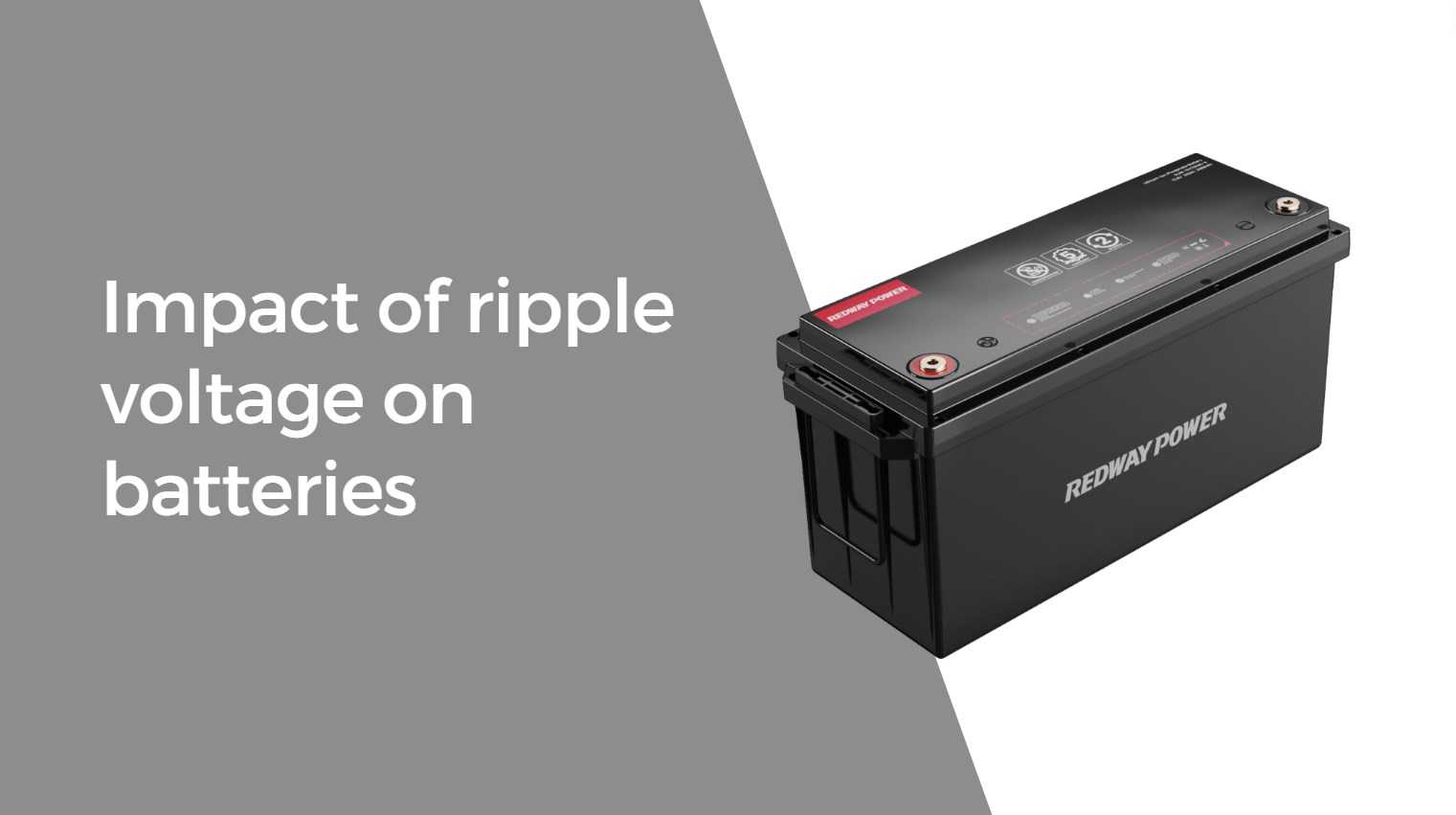
- Effects on Battery Performance:
- High ripple voltage increases internal resistance, leading to elevated heat within the battery.
- This excess heat can cause thermal runaway, posing safety risks and accelerating degradation.
- Accuracy of Measurements:
- Ripple voltage interferes with stable DC voltages, impacting state-of-charge measurements.
- Battery monitoring systems relying on precise readings may provide inaccurate capacity assessments due to fluctuations caused by ripple voltage.
- Mitigation Strategies:
- To minimize negative effects, use chargers with low ripple characteristics.
- High-quality chargers incorporate filtering techniques like capacitors or inductors to reduce AC components in their output currents.
- Maintenance for Optimal Performance:
- Regularly check charging systems for excessive ripple voltage.
- Minimizing electrical noise during charging ensures safer operation and maximizes the overall lifespan of lithium batteries.
Finding the state of charge
Determining the state of charge is crucial for effectively charging lithium batteries, preventing damage, and maximizing lifespan. Various methods simplify this process, ensuring you have the right tools to gauge your battery’s energy levels accurately.
- Battery Monitor:
- Use a battery monitor for a quick display of current voltage and estimated remaining capacity.
- This snapshot helps you assess how much power remains in your lithium battery.
- Multimeter Measurement:
- Employ a multimeter to measure voltage directly across battery terminals.
- Compare the measurement with manufacturer-provided voltage charts for a more accurate state-of-charge estimate.
- Solar Charge Controllers:
- Utilize solar charge controllers, especially with solar panels, featuring built-in monitoring features.
- These controllers use algorithms based on voltage measurements to estimate the battery’s fullness.
- Regular Monitoring for Optimization:
- Regardless of the method, regularly check your battery’s state of charge during charging cycles.
- This practice ensures optimal performance, avoiding issues associated with under or overcharging and prolonging the overall lifespan of your lithium battery.
Peukert’s Law
Understanding Peukert’s Law is crucial for optimizing the charging and usage of lithium batteries. Named after Wilhelm Peukert, this concept explains how a battery’s effective capacity decreases with higher discharge currents, impacting its performance in high-power applications.
- Peukert’s Law Basics:
- Named after Wilhelm Peukert, this law highlights reduced battery capacity with increased discharge currents.
- Essentially, the effective capacity diminishes when drawing more power from a lithium battery.
- Consideration in High-Drain Scenarios:
- When powering high-drain devices like electric vehicles or power tools, Peukert’s Law must be considered.
- It helps determine the battery’s lifespan and the amount of energy that can be effectively utilized.
- Understanding Internal Resistance Impact:
- Peukert’s Law emphasizes that higher discharge currents lead to reduced capacity due to increased internal resistance.
- This understanding helps optimize charging practices for longer-lasting and more efficient usage of lithium batteries.
- Integration with Other Charging Factors:
- Combining Peukert’s Law with factors affecting charging voltage and cycle life allows comprehensive optimization.
- This holistic approach ensures efficient charging practices, especially in scenarios involving high-power applications.





